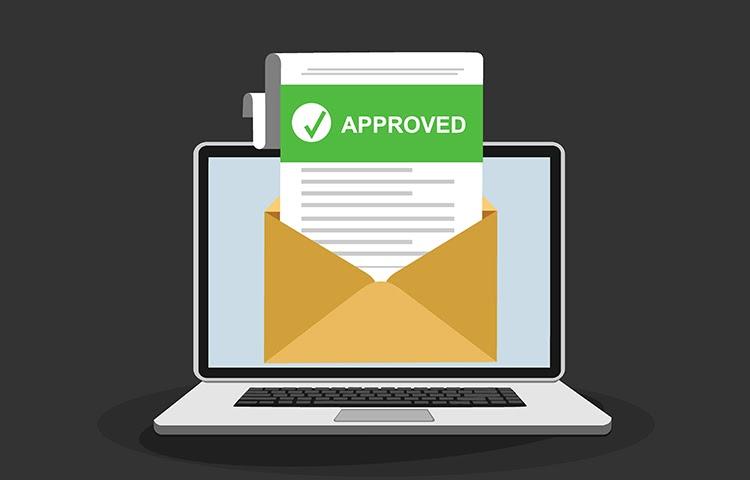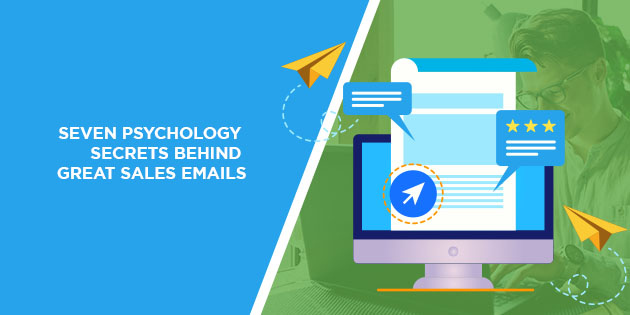What triggers lead to somebody replying to your emails? In this article, we unearth the secrets that will give you the answers.
You’ve set up your automated email campaign and you’re feeling pretty good about it right now.
But your work doesn’t end there.
If you don’t understand how your prospects think and feel, you won’t maximise the effectiveness of your campaign.
Simply put, you need to understand the psychology behind emails.
There are certain techniques that you can employ to make the reader more likely to respond. And if you put these seven secrets into practice, you’ll see immediate results.

Secret #1 – Appeal to Scarcity, Urgency, or Exclusivity in Subject Lines
We’ve spoken about the importance of having a good subject line in a previous article. But here, we want to focus on the three things that are most likely to trigger somebody to open your email:
- Scarcity
- Urgency
- Exclusivity
When you employ scarcity, you’re letting the reader know that there’s limited availability of whatever you’re offering. For example, you may offer a webinar that only 20 people can join. Mention that scarcity in your subject line and the reader is more likely to open the email.
Urgency works by essentially adding a time limit to the offer. Sticking with the webinar offer, you may make it so that the reader only has 48 hours to sign up. People get a jolt of fear when they feel like they’re about to miss out. Utilise that emotion to prompt them into taking the action that you want.
Finally, we have exclusivity. People love to be a part of something limited. For example, you may have a piece of content that you only share with members. You can leverage the value of that content in a subject line for emails sent to non-members. If they want the value that you offer, they need to join the club. And when they do, they’ll gain access to things that normal people don’t have.
Secret #2 – Leverage the Double Opt-In
How many steps are in your opt-in process?
Most businesses simply ask prospects to sign up for an email list. Once they do that, the company sends out emails straight away.
That’s the single opt-in method.
But with the double opt-in, your first email asks for confirmation that the recipient intended to subscribe to it. This shows that you have respect for the recipient’s time, which means they’re more likely to open future emails.
It’s all about reciprocity.
If you show them respect for their time, they’ll show respect for the time you spent on future emails.
As a bonus, the double opt-in allows you to weed out people who don’t really want to be on your list. That means you’re not wasting time or money on people who would never respond.
Secret #3 – Show Them What You Have in Common
We’ve all heard the phrase that opposites attract. But when it comes to marketing, nothing could be further from the truth.
Your prospects want to see that you offer more than a product that they might find useful. They want to know that your values align with their own.
Psychologist Jerry M. Burger looked into this particular concept. He found that people who share incidental similarities, such as a birthday, were more likely to agree to requests. That holds true even if the person making the request isn’t known to them!
That line of thinking extends to the values you exhibit and even the hobbies that you may share. Find the common ground and then leverage it to strengthen the connection between you and your prospect.
Secret #4 – Appeal to the Primitive Brain
Every single person has a primitive brain. It’s what gives us the gut reaction to anything we see. The more logical parts of our brain kick in once we’ve had a little time to process things. But it’s often the gut reaction that sticks with people the most.
You need to aim for that gut reaction with both your subject header and the opening of your email.
The key here is to shoot for an emotional response. You want the reader to feel something, rather than asking them to think about things logically.
The scarcity example mentioned above shows you exactly how this works. The fear of missing out is the gut reaction that the reader has. This can lead them to open the email before they’ve even thought about the likelihood that they won’t miss out.
You can use this gut instinct in so many ways, depending on your campaign. What’s key is that you aim for the emotions – logic can come later.
Secret #5 – Use Images (Our Brains Love Them)
The human brain processes images about 60,000 times faster than it processes text. It makes sense when you think about it. Most of what we process is visual. Even the text you see is an image that your brain has to process to identify it as text in the first place.
But the point here is that the brain loves images.
And this means that you need to include them in your emails.
This isn’t to say that you have to stuff as many images as you can into each email. Instead, create one or two that reflect the core message of the email. This allows you to move the prospect into the emotional headspace needed for the content of your words to have a deeper effect.
At Automation Agency, we offer image design services that you can use for your email campaigns. We’ll work with you to craft images that relay your intended message and make sense in the context of your email. Send a task to our service if you feel your email campaign could use more attractive images.
Secret #6 – Be Careful with Colour Selection
Do you know why so many fast-food restaurants use red in their logos?
It’s because red supposedly prompts feelings of hunger in those who see the colour. And every time you look at the McDonald’s or KFC logo, you’re seeing a psychological trick.
Of course, this also means that the colours used in your emails have an effect on the reader’s mind.
In this context, red tends to signify danger or a sense of urgency. Yellow encourages a more relaxed mindset, as does green. The latter’s association with nature also makes it useful if your product serves the environment.
The point is that the colours used in your email, especially those in your images, have an emotional impact. For example, if you offer massage services, you want to promote feelings of calm and relaxation. Sharp reds and blacks achieve the opposite, which could make your email less effective.
Secret #7 – How Often You Send Your Message Is as Important as the Message Itself
This is a tricky one, especially if you’ve heard of the exposure effect. This posits that repeated exposure to a message will make somebody more likely to absorb that message.
This line of thinking may prompt you to send repeated emails to your prospects about the same subject. But in doing that, you risk destroying the respect and trust that you’ve established.
By the same token, barely emailing them at all shows a lack of interest on your part. That gets reflected back at you when you finally do send an email and nobody opens it.
The point is, frequency is just as important as content when it comes to emails. You need to strike a balance so you’re not spamming inboxes, but you’re also not getting forgotten.
As a general rule of thumb, only send an email if it has something of value to say. Part of that message could relate to a message that you’ve sent previously. But you still need to offer something new to keep the reader engaged.

Master the Mind to Make Email More Effective
So… how effective would you say your emails are after reading these secrets?
The likelihood is that there are at least a few psychological techniques that you could use to increase open and response rates.
Employ them and you’ll see stronger results.
And while we may not be able to help you write your emails, we can certainly help you with your campaign.
At Automation Agency, our team can help you to set up the automation process for your entire campaign. This means handling everything – from opt-in forms to segmenting the contacts on your list. And on top of that, our design team can create attractive imagery that’s perfect for your emails.
We’re happy to help, so send a task to the Concierge Service to learn more.
And if you’re not yet a member, find out if we’re a good fit for you with our Right Fit Chatbot.


